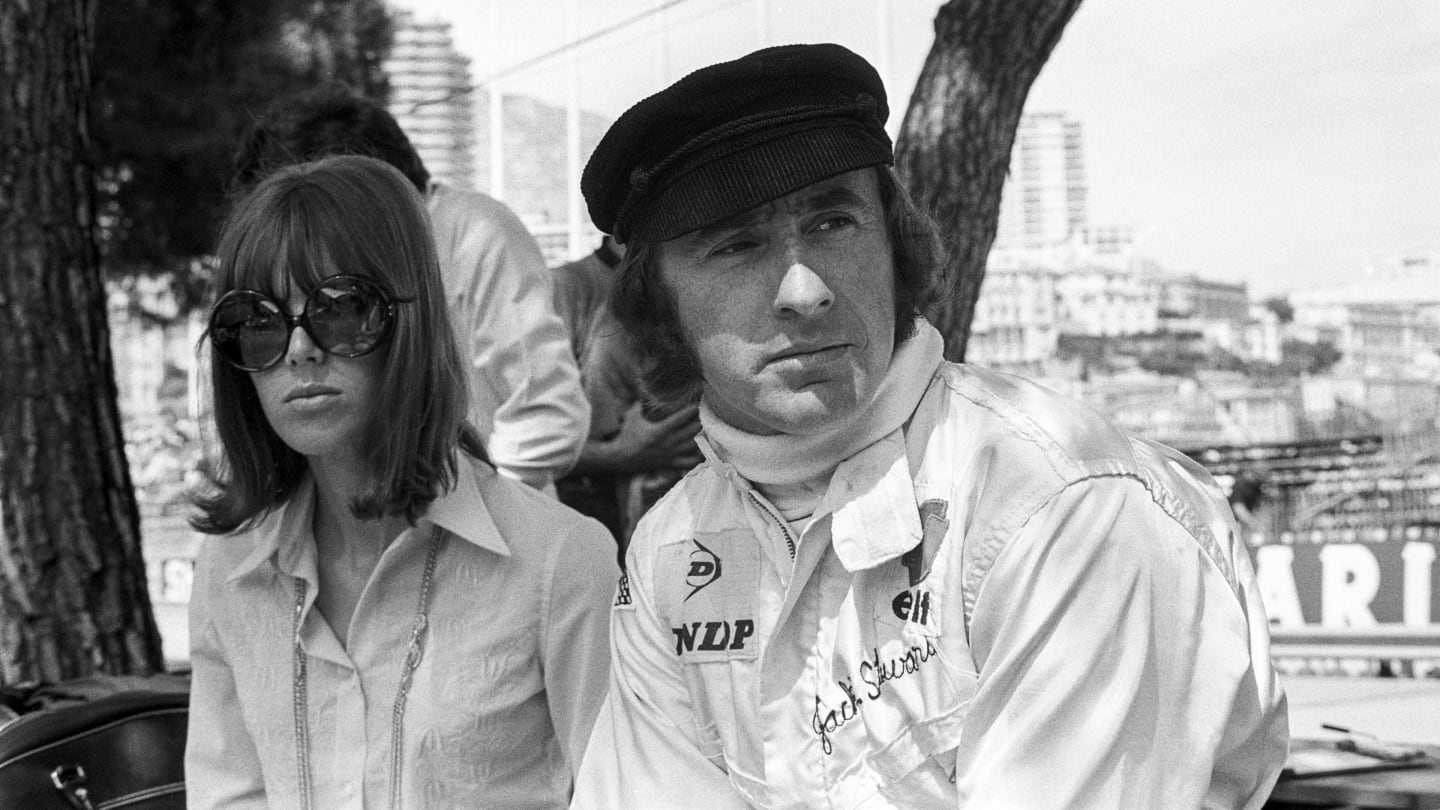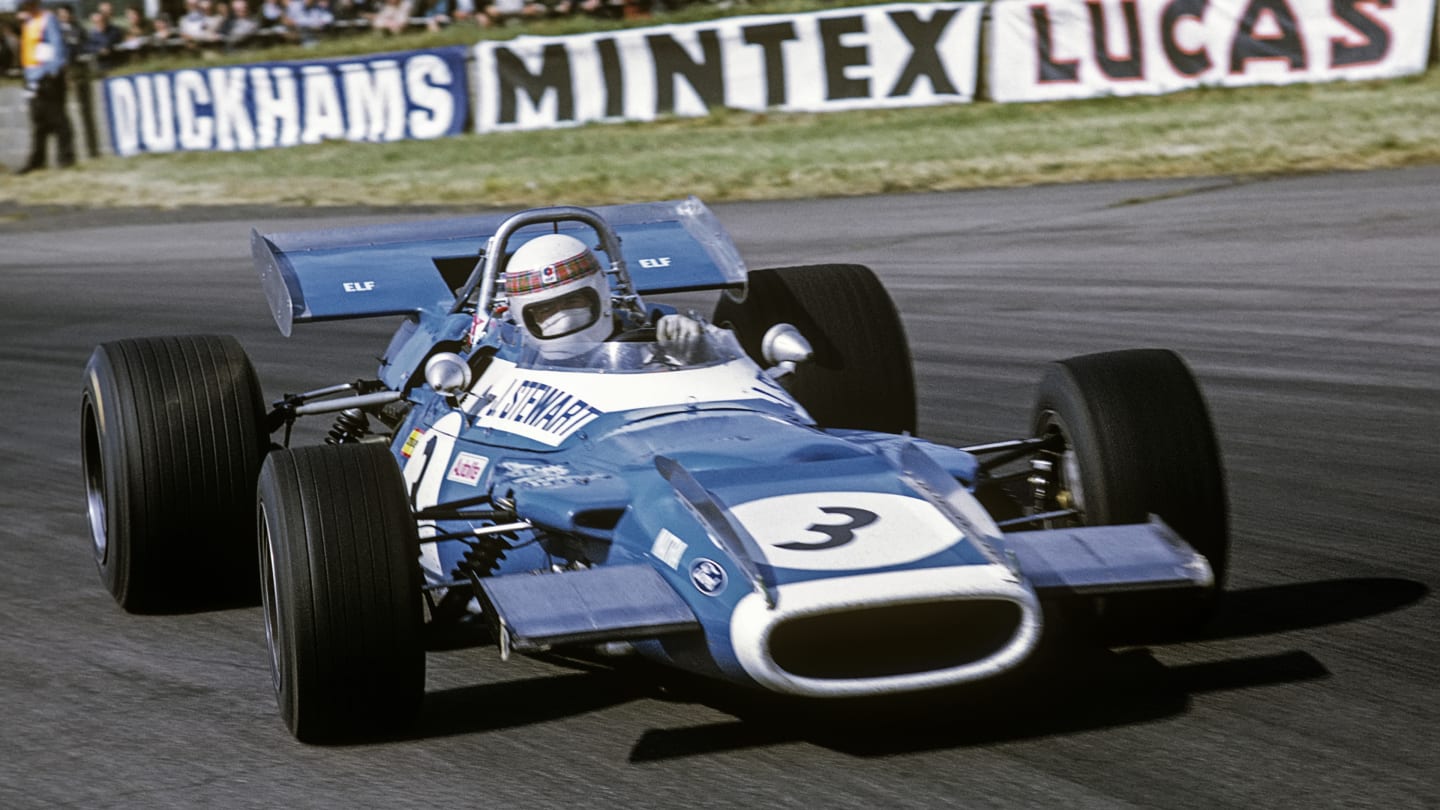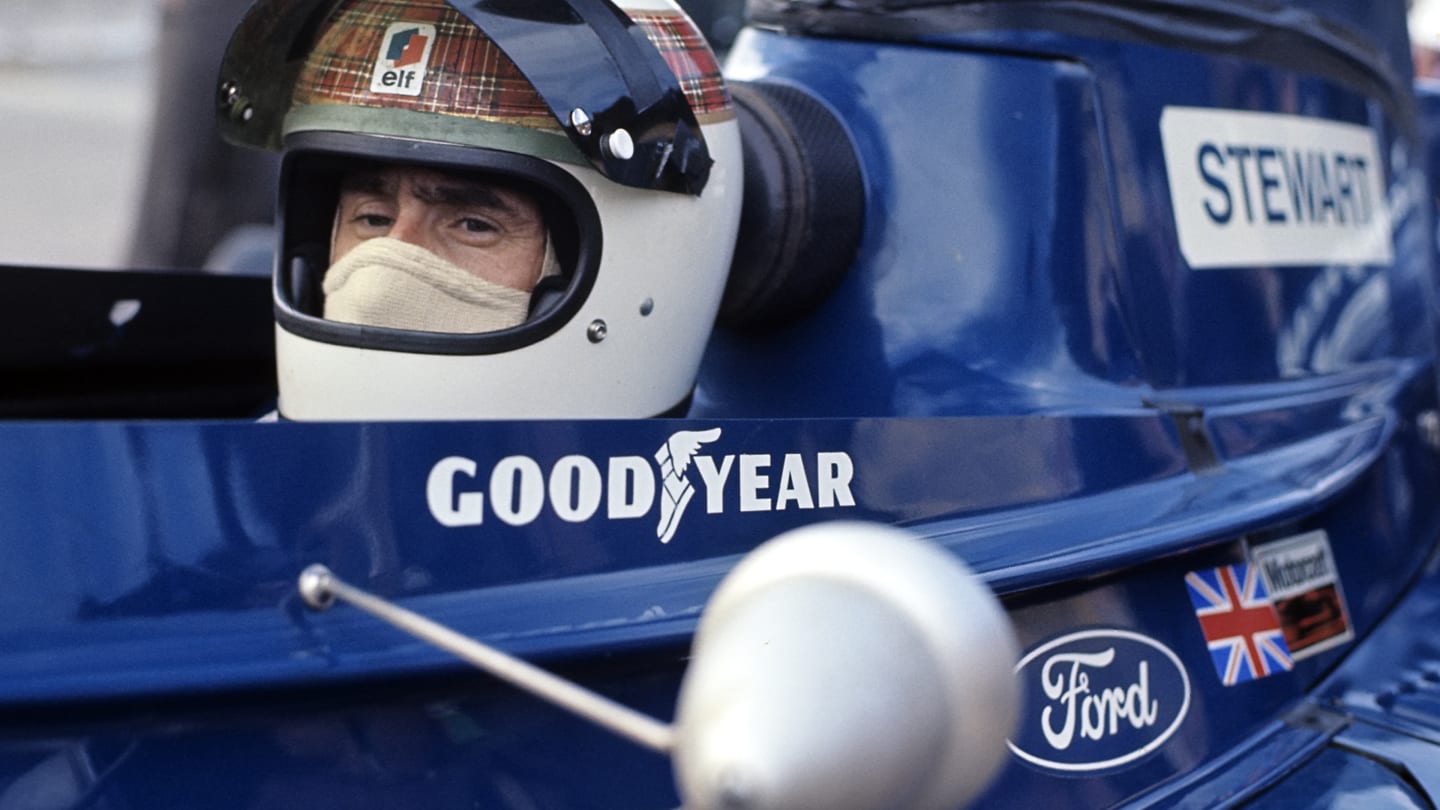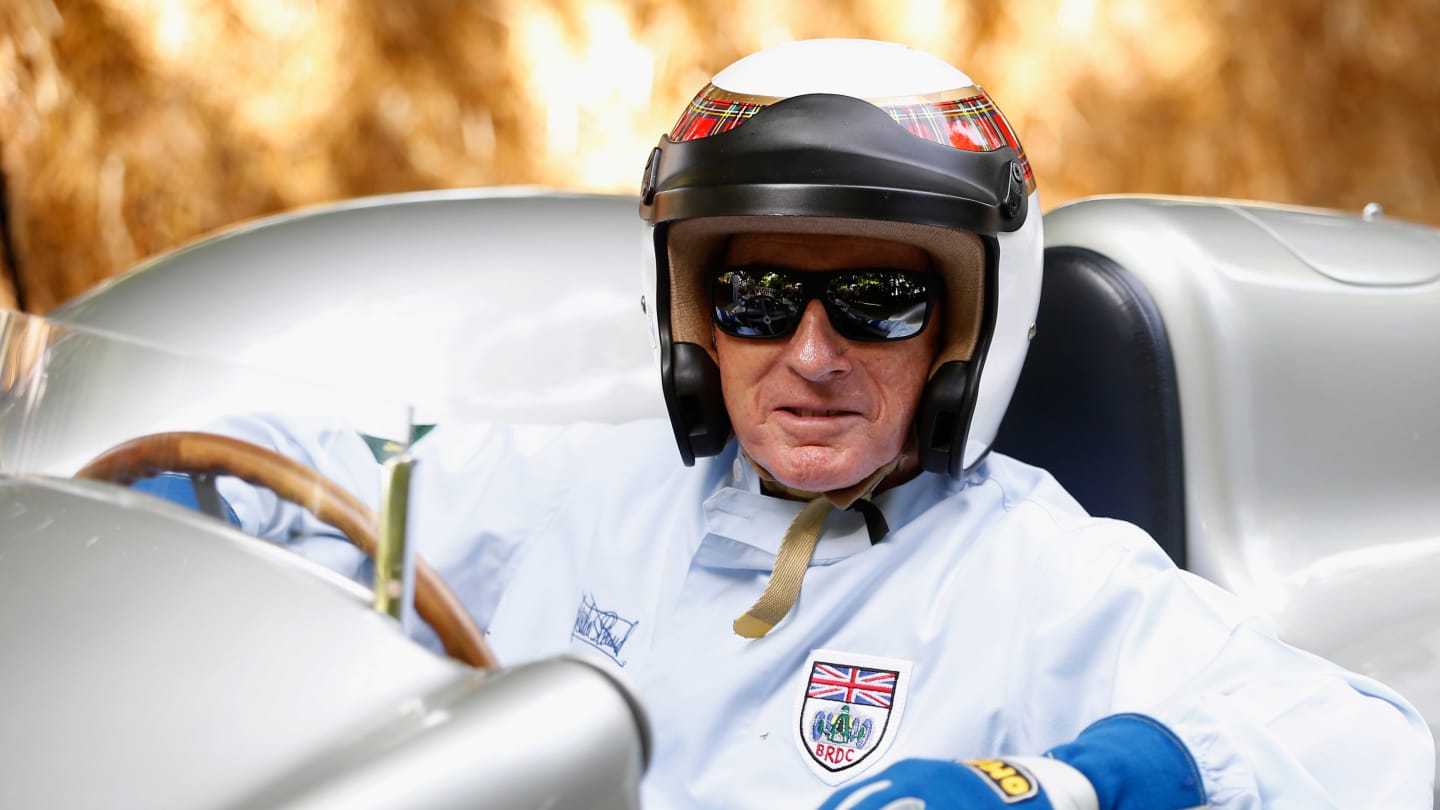
HALL OF FAME - 1969, 1971, 1973
Jackie Stewart

His outstanding track record still ranks him among the most successful champions, yet in terms of personally influencing the way Formula 1 racing developed Jackie Stewart stands alone. His one-man safety crusade made the sport much safer. His excellent communication skills helped make it more popular. He set new standards of professionalism for drivers and was also a pioneer in exploiting Formula 1 racing's commercial potential. His keen intelligence and tireless energy helped, but he would never have been able to exert such influence had he not been a truly great driver.
John Young 'Jackie' Stewart was born in Dumbartonshire, Scotland, on June 11, 1939. His father owned a garage business and Jackie's older brother Jimmy was the first in the family to try racing, though his mother disapproved. There were also fears about Jackie's future because he was a failure at school and left at 15. Only later was he diagnosed as suffering from severe dyslexia - which made his subsequent achievements even more remarkable. While still a teenager he took up clay pigeon shooting and became one of the best shots in Britain. When he began racing saloons and sportscars he quickly showed outstanding talent that prompted team entrant Ken Tyrrell to hire him to contest the 1963 British Formula 3 series, in which the speedy Scot won seven races in a row.

Stewart in the Matra-Ford MS80 at the 1969 British Grand Prix at Silverstone
In 1965 he joined the BRM Formula 1 team and stayed there for three seasons, winning two Grands Prix and firmly establishing himself as a frontrunner. In 1968, when Ken Tyrrell decided to go Formula 1 racing, Stewart teamed up with him to form what would become one the most productive Formula 1 partnerships. In his six seasons with Tyrrell, Stewart was nearly always the driver to beat and remained so until he retired at the end of 1973 at the age of 34. His 27 race wins and three championships made him the best since Juan Manuel Fangio, but the mark he made on the sport went much further than the record books.
Almost single-handedly, and against strong opposition, Stewart's crusade for improved safety measures eventually saved countless lives in what had been the deadliest sport in the world. In one particularly lethal period during his era the chances of a driver who raced for five years being killed were two out of three. In 1970 Stewart was devastated by the deaths of his close friends Piers Courage and Jochen Rindt. In 1973 his Tyrrell team mate Francois Cevert was killed in what was to have been Stewart's last race. The team withdrew as a mark of respect but Stewart redoubled his efforts to improve safety.

Jackie Stewart in the cockpit of the Tyrrell-Ford 005 at the 1973 Brazilian Grand Prix
Stewart's own brush with death had occurred in the 1966 Belgian Grand Prix at the notoriously dangerous Spa circuit. On the first lap a sudden rain shower that sent half the field spinning off the track left Stewart trapped in a ditch in his crumpled BRM with fuel leaking all around him. There were no track marshals nearby so two drivers who had also crashed prised him out of the wreckage and Stewart was stuffed into a decrepit old ambulance that got lost en route to hospital. "As it turned out I only had a broken collar bone," Stewart recalls, "but it was simply ridiculous. Here was a sport that had serious injury and death so closely associated with it, yet there was no infrastructure to support it, and very few safety measures to prevent it. So, I felt I had to do something."
Among the things he did was to introduce full-face helmets and seatbelts for drivers and help develop the Grand Prix medical unit that began travelling to the races. He successfully campaigned for safety barriers and greater run-off areas at particularly dangerous corners, to protect spectators as well as drivers.
"But there was criticism from the media, even from some drivers," Stewart remembers. "It was said I removed the romance from the sport, that the safety measures took away the swashbuckling spectacular that had been. They said I had no guts. But not many of these critics had ever crashed at 150 miles an hour. Fortunately, I was still achieving a lot of success, winning races in hideously dangerous conditions, and that gave me greater influence. For instance, I won four times at the original Nurburgring in Germany - the most dangerous circuit in the world - and yet I was always afraid of that place. In 1968 I won there by over four minutes in thick fog and rain where you could hardly see the road. That race should never have been held, and having won it by such a big margin gave me more credibility when I demanded safety improvements. But I wouldn't have done what I did if I had wanted to win a popularity contest."
And yet the charismatic and brilliantly articulate 'Wee Scot' became hugely popular with the public. Wearing his trademark black cap and with his hair as long as a rock star, Stewart became an international celebrity - the first Formula 1 superstar. Though he was always a family man (deeply devoted to his wife Helen and their sons Paul and Mark) and never a playboy, he was seen as the daring racing driver with the glamourous lifestyle who consorted with royalty, prominent politicians, musicians and movie stars.

Stewart prepares to drive up the hill at 2015's Goodwood Festival of Speed in England
He also frequented the corporate boardrooms of big business and became a multi-millionaire long before he hung up his helmet. He starred in TV commercials and advertising campaigns, gave speeches, went on worldwide promotional tours and had offices in London, New York and Switzerland, where he lived for several years. Stewart was well-placed to cash in on the dividends provided by the arrival of major sponsors when Formula 1 racing became a global television spectacle - a phenomenon in which he also played a major role.
He became a much sought after media personality and a compelling TV commentator, explaining the intricacies of the sport and tirelessly promoting it. In 1971 he worked for ABC TV as co-host for the big American network's live coverage of the Monaco Grand Prix. On the starting grid, where his Tyrrell was on pole, Stewart spoke to the camera explaining in detail how difficult the race would be. At the finish line he pulled off his helmet and again addressed the camera, explaining how he had won.
He was always a winner (even his new Stewart Grand Prix team won in 1999 before he sold it to Ford, who re-branded it Jaguar, which went nowhere) and Jackie Stewart remains one of the best known Formula 1 champions. He still loves the sport and in 2001 he received a knighthood for his contributions to it.
Text - Gerald Donaldson